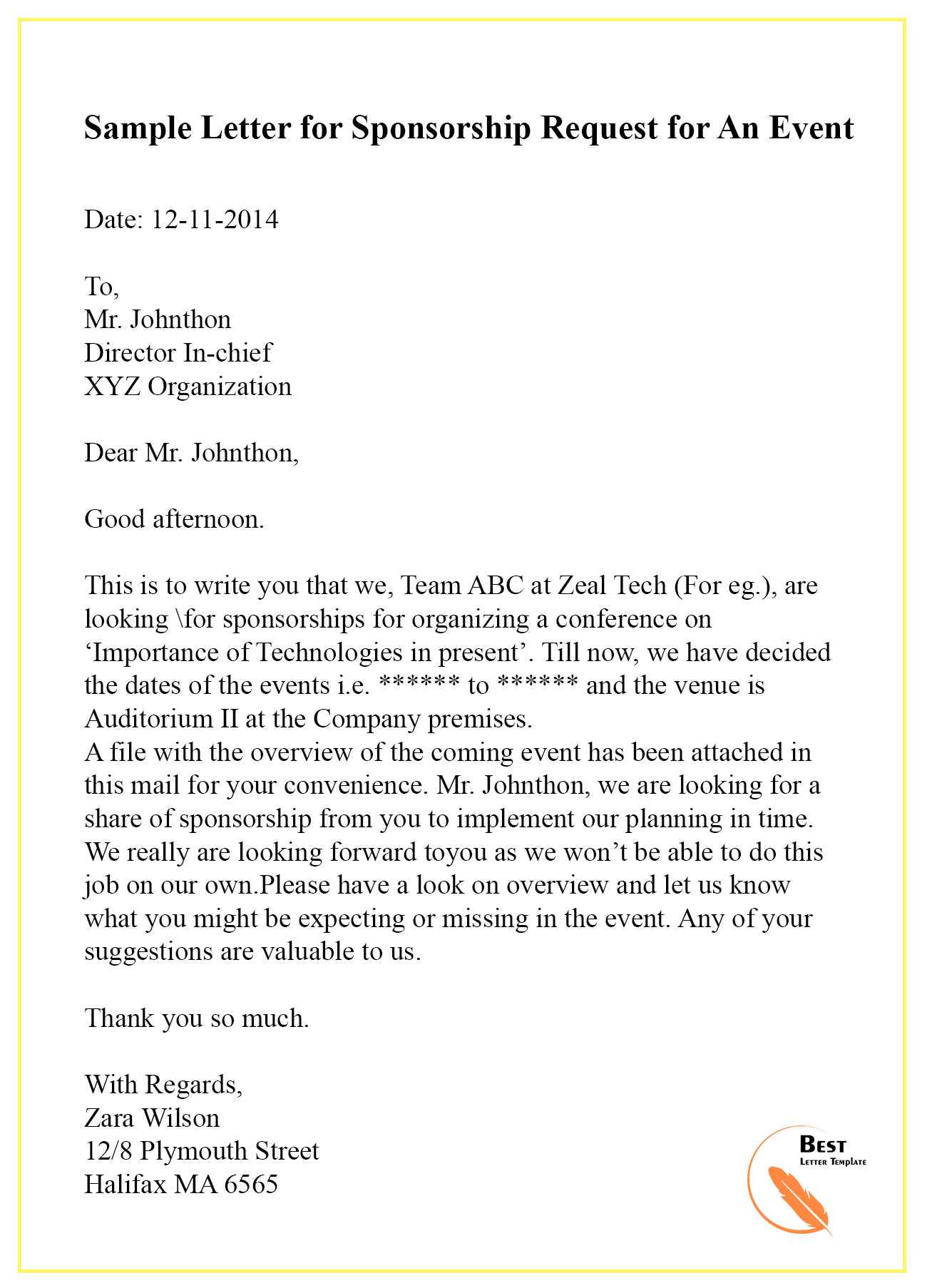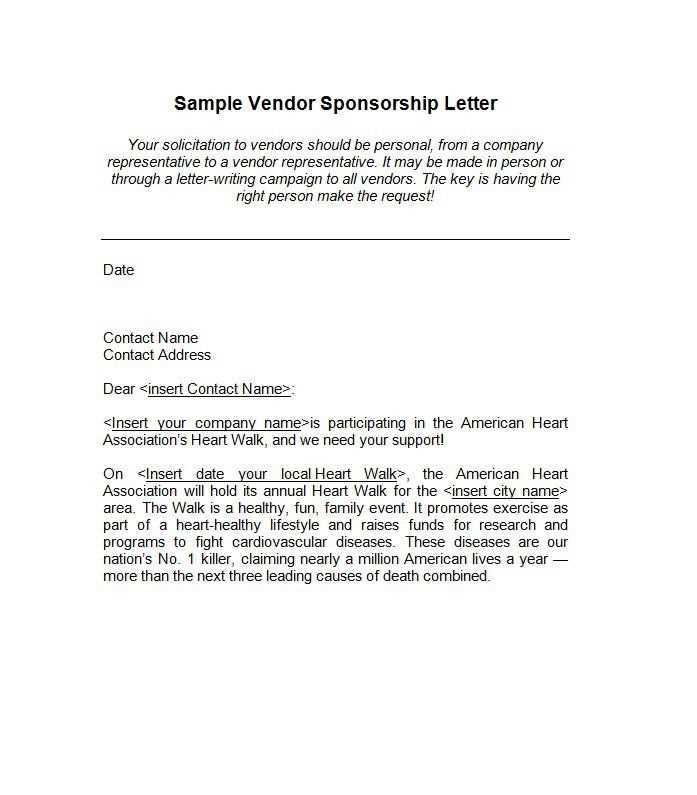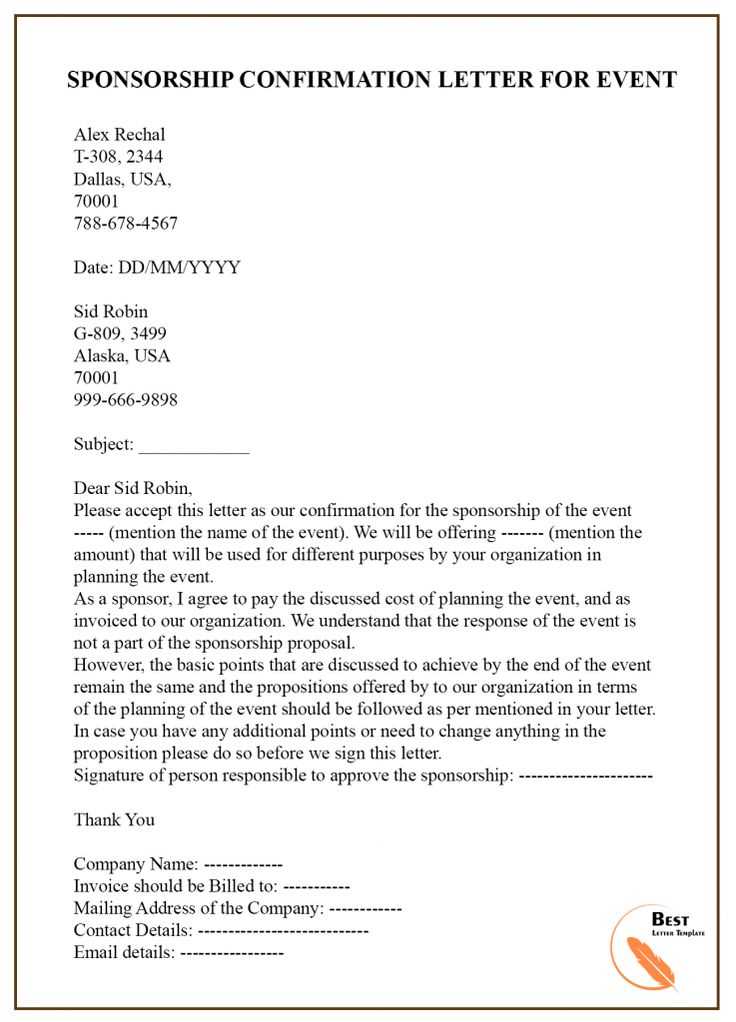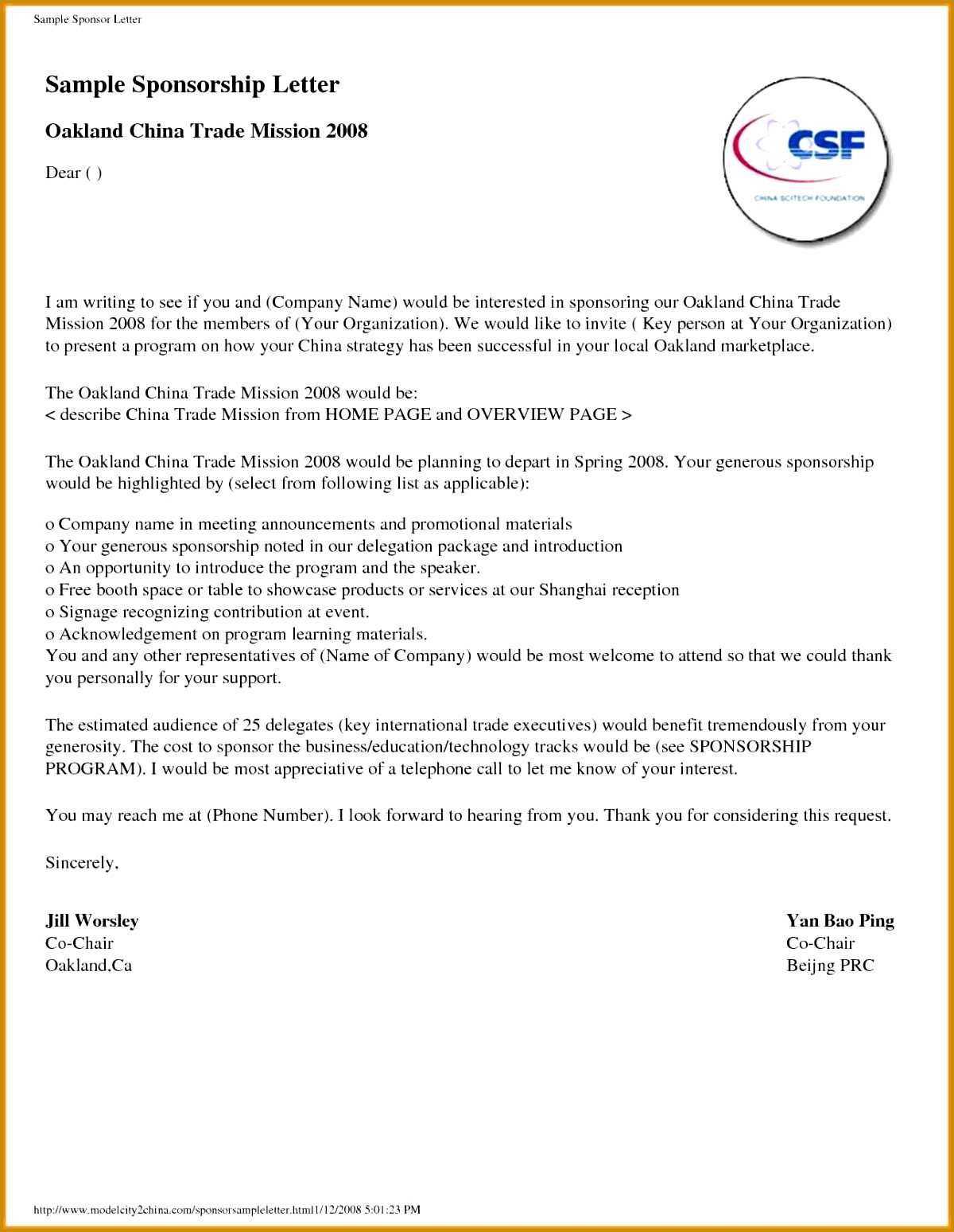Company Sponsorship Letter Template for Your Business

When reaching out to potential partners or investors, crafting a formal request for support can be a crucial step. This document plays a key role in presenting your cause, project, or event in a professional light, encouraging others to contribute in a meaningful way. Understanding the key components and structure of such a request is essential to increase the chances of success.
Key Components of a Formal Request

To ensure your request resonates, it is vital to include certain elements. These components should align with the purpose of your appeal and make it clear how the recipient can contribute or benefit from participating.
- Introduction: Briefly introduce your initiative, the reason for the request, and how their support will make a difference.
- Objectives: Clearly outline the goals of your project or event, explaining its significance and potential impact.
- Specific Request: Make your ask clear–whether it’s funding, resources, or other forms of assistance.
- Benefits: Highlight the advantages for the recipient, showing why their involvement matters.
- Contact Details: Provide clear instructions on how they can get in touch or proceed with the next steps.
Formatting Your Appeal

Having a clean, professional layout is crucial. The presentation of your request can influence how it is perceived. Ensure the document is well-structured, with clear headings and sections that guide the reader through the content.
Common Pitfalls to Avoid

While drafting your request, there are a few common mistakes to steer clear of:
- Being too vague: Always be specific about your needs and expectations.
- Overloading with information: Keep the request concise while providing enough details to convey the importance.
- Neglecting the tone: A formal and respectful tone is necessary to establish credibility and professionalism.
Adapting Your Request for Different Audiences
Each recipient may require a tailored approach. While the core structure remains the same, consider adjusting the tone or focus depending on whether you are reaching out to individuals, organizations, or potential investors.
Being mindful of these adjustments can improve the chances of a successful partnership or collaboration.
How to Write a Formal Request for Support
When seeking support for a project or event, it’s essential to craft a formal document that clearly communicates your needs and encourages involvement. A well-written request can establish trust and motivate the recipient to contribute. This section will guide you through the necessary steps to compose a compelling and professional appeal, ensuring you cover all important points while maintaining clarity.
To create an effective appeal, include several key elements that will highlight your cause and how the recipient can assist. The introduction should grab attention and explain the purpose of your communication. Follow this with an outline of your goals and the specific assistance required, ensuring the request is easy to understand. Don’t forget to emphasize the benefits to the recipient, showing how their participation aligns with their interests or values.
When drafting the document, aim for a professional tone throughout. Your choice of language should reflect the seriousness of the request, and the document should be well-structured for easy reading. Keep it concise, avoiding unnecessary details, and focus on making your appeal clear and straightforward.
Avoid common pitfalls like vague statements, excessive information, or a casual tone. Instead, focus on precision and clarity. The recipient should know exactly what you’re asking for and why it matters. Also, make sure the document is formatted neatly, with clear headings and sections, making it easy to navigate.
Once you have your initial draft, consider adjusting it to fit different recipients. Tailoring your request for specific audiences–such as businesses, individuals, or organizations–can make it more effective. Ensure that the tone, focus, and details match the interests and expectations of each group.
Finally, when it’s time to send the appeal, follow best practices. Ensure all contact information is correct and that the request is sent through the appropriate channels. Whether by email or post, make sure the document reaches the intended recipient in a timely and professional manner.